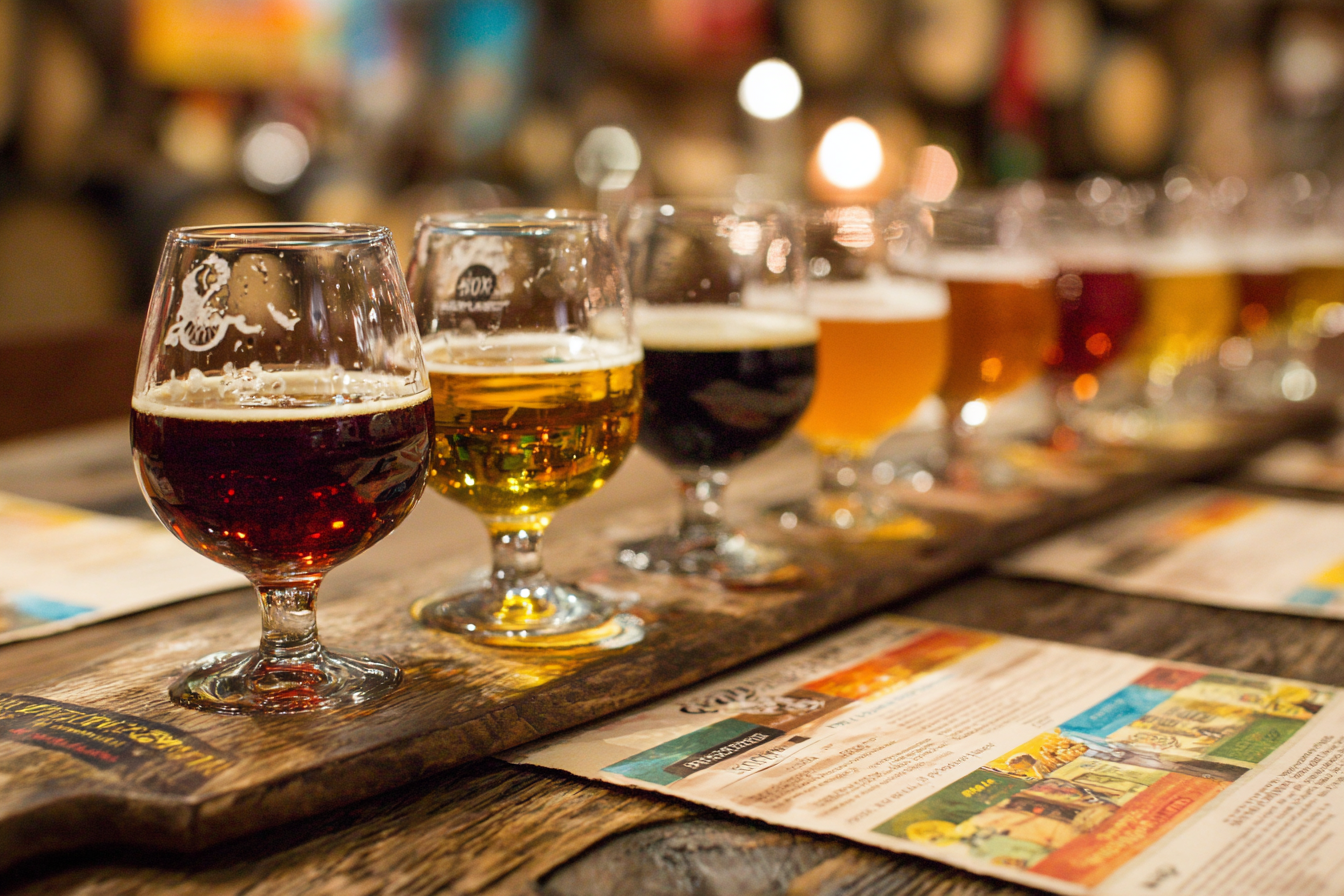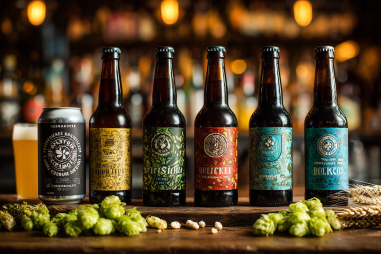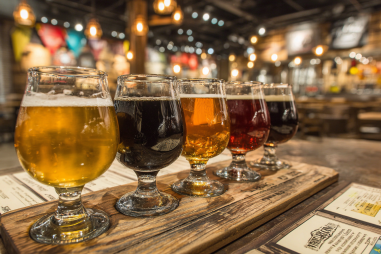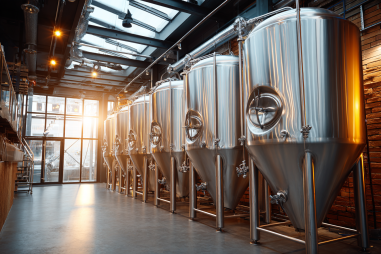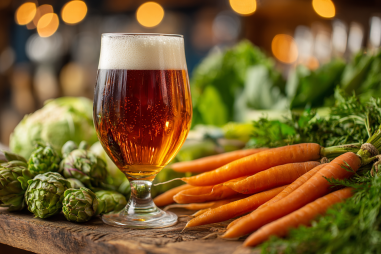Barrel-aged barleywine is a complex and luxurious style of beer that tantalizes the senses with a rich blend of flavors and aromas. For enthusiasts and budding tasters alike, learning to identify and articulate the distinctive tasting notes in these beers unlocks a deeper appreciation of their craftsmanship. This guide will walk you through the essential aspects of tasting barrel-aged barleywine, helping you refine your palate and savor every layer of malt richness, barrel character, and aromatic complexity these beers offer.
Understanding Barrel-Aged Barleywine
Barleywine is known for its robust malt backbone, high alcohol content, and layered flavors. When aged in barrels—often previously used for whiskey, bourbon, or wine—the beer absorbs additional nuances from the wood and the barrel’s contents, amplifying complexity. The aging process can impart flavors such as oak, vanilla, caramel, and subtle hints of the spirit that once filled the barrel. These notes meld with barleywine’s inherent sweetness and fruity esters, creating a beer that is as rich in flavor as it is in history.
Before diving into the tasting experience, it’s important to recognize that barrel-aged barleywine will likely have a higher alcohol presence and a thicker mouthfeel compared to standard beers. Being prepared for these elements helps set expectations and enhances your tasting journey.
Common Flavor Components in Barrel-Aged Barleywine
To master barrel-aged barleywine tasting notes, it helps to know the typical flavors you might encounter. While each beer is unique, several components frequently appear in this style:
- Malt Richness: At the heart of barleywine is a deeply malty profile, often featuring caramel, toffee, toasty, and biscuit-like flavors. The sweetness can range from subdued to candy-like, balancing the warmth of the alcohol.
- Oak and Wood: Barrel aging introduces wood notes, which can vary depending on the type of barrel. These might be dry, tannic oak flavors or more resinous, woody aromas.
- Vanilla and Spice: The interaction between the beer and the barrel often imparts vanilla, cinnamon, clove, or nutmeg nuances, especially when bourbon or whiskey barrels are used.
- Fruity Esters and Dark Fruit: Barleywine is known for rich fruit character, including dark fruits like raisin, fig, plum, and cherry, which can be further intensified or modified by barrel aging.
- Alcohol Warmth: A noticeable but balanced heat from the higher ABV that can sometimes come with a sweet, boozy note.
Techniques for Effective Tasting
Tasting barrel-aged barleywine is best approached thoughtfully, allowing you to uncover its layered complexity. Here are steps to enhance your tasting experience:
- Choose the Right Glassware: Use a tulip-shaped glass or snifter to concentrate aromas and allow better swirling.
- Pour and Observe: Notice the beer’s color and clarity. Barrel-aged barleywines often have deep amber, mahogany, or garnet hues with some haze from aging.
- Swirl the Beer: Gently swirling releases the bouquet of aromas, helping you detect subtle notes that might be missed otherwise.
- Engage Your Nose: Take slow, deliberate sniffs to identify different scent layers, from malt sweetness to woody, spicy, or fruity hints.
- Take Small Sips: Let the beer coat your tongue and palate. Try to identify the progression of flavors: initial sweetness, mid-palate complexity, and finish.
- Consider Temperature: Slightly warmer temperatures (55-60°F) often help highlight the full range of barrel-aged barleywine flavors.
Describing Aroma, Mouthfeel, and Finish
When tasting, try to break down your experience into three main components:
Aroma
The aroma is your first clue to a beer’s flavor profile. Barrel-aged barleywines typically offer a heady mix of malt sweetness, oak, vanilla, and dark fruit aromas. You might detect scents reminiscent of caramel candies, fresh cedar, or dried plum, intertwined with hints of bourbon or wine depending on the barrel type.
Mouthfeel
Barrel-aged barleywines tend to have a full, rich mouthfeel. The beer may feel thick and almost syrupy but should maintain a balance between creaminess and carbonation. The warmth of the alcohol adds to the tactile experience, creating a pleasant heat that persists without overwhelming.
Finish
The finish is the lingering flavor after swallowing. A well-aged barleywine usually has a lingering sweetness paired with woody or spicy elements from the barrel. Some notes of bitterness from the hops or tannins from the oak might also emerge, providing balance and complexity as the flavors slowly fade.
How Barrel Aging Influences Tasting Notes
The barrel-aging process is transformative. As the beer spends months or even years in the barrel, it absorbs the flavors from the wood and residual alcohol or wine left behind. These influences add multiple layers:
- Oak Character: Fresh oak barrels tend to impart stronger wood notes and tannins, while previously used barrels provide subtler hints.
- Spirit Influence: Whiskey barrels may contribute vanilla, caramel, and smoky elements; wine barrels can add tart or fruity esters.
- Mellowing Effect: The extended aging smooths out sharp alcohol edges, blending flavors into a harmonious whole.
- Micro-oxidation: Slow oxygen exposure can develop sherry-like nuances or a slight nuttiness over time.
The combination of these factors results in a barleywine that is richer, deeper, and more layered than its unaged counterpart.
Sample Tasting Notes from Popular Barrel-Aged Barleywines
Exploring real examples can sharpen your palate and give you a framework for describing your own experiences. Here are some sample tasting notes from well-regarded barrel-aged barleywines:
Example 1: Bourbon Barrel-Aged Barleywine
A deep amber pour with ruby highlights and a creamy tan head. On the nose, rich caramel and vanilla mingle with oak and subtle smoke. The palate is a luscious blend of toffee, dried cherry, and baking spices, balanced by a mild boozy warmth and smooth wood tannins. The finish offers lingering vanilla sweetness with a touch of dark fruit bitterness.
Example 2: Wine Barrel-Aged Barleywine
Darker reddish-brown with a frothy off-white head. Aromas reveal dried figs, black currants, tart cherries, and light leather. The mouthfeel is medium-full with moderate carbonation. Flavors unfold with ripe plum, toasted malt, and subtle vanilla layered with a soft acidity and tannic presence from the wine barrel. The finish is smooth, slightly dry, and fruit-forward.
Example 3: Oak Barrel-Aged Barleywine
Pouring deep mahogany with an off-white head that laces the glass. Aromatics showcase rich malt, cedar, and subtle spices like clove and nutmeg. The taste is luxuriously sweet with molasses, toasted nuts, and oak tannins, balanced by a warming alcohol presence. The finish is long and satisfying, featuring hints of vanilla and dark fruit.
Building Your Tasting Skills
Developing a refined palate for barrel-aged barleywine takes practice and patience. Regular tasting sessions where you focus on one characteristic at a time can be especially helpful. Keep a tasting journal to record the aromas, flavors, mouthfeel, and finish of each beer. Over time, you’ll notice patterns and be able to articulate your impressions more clearly.
Joining tasting groups or beer clubs focused on barrel-aged styles can also expand your exposure and provide opportunities for discussion. Comparing notes with others often uncovers new perspectives and vocabulary to describe complex beers.
Remember, the goal is not just to identify flavors but to appreciate how they interact to create a unique sensory experience. Barrel-aged barleywine is a treat for the senses, and mastering its tasting notes is a rewarding journey for any beer lover.

